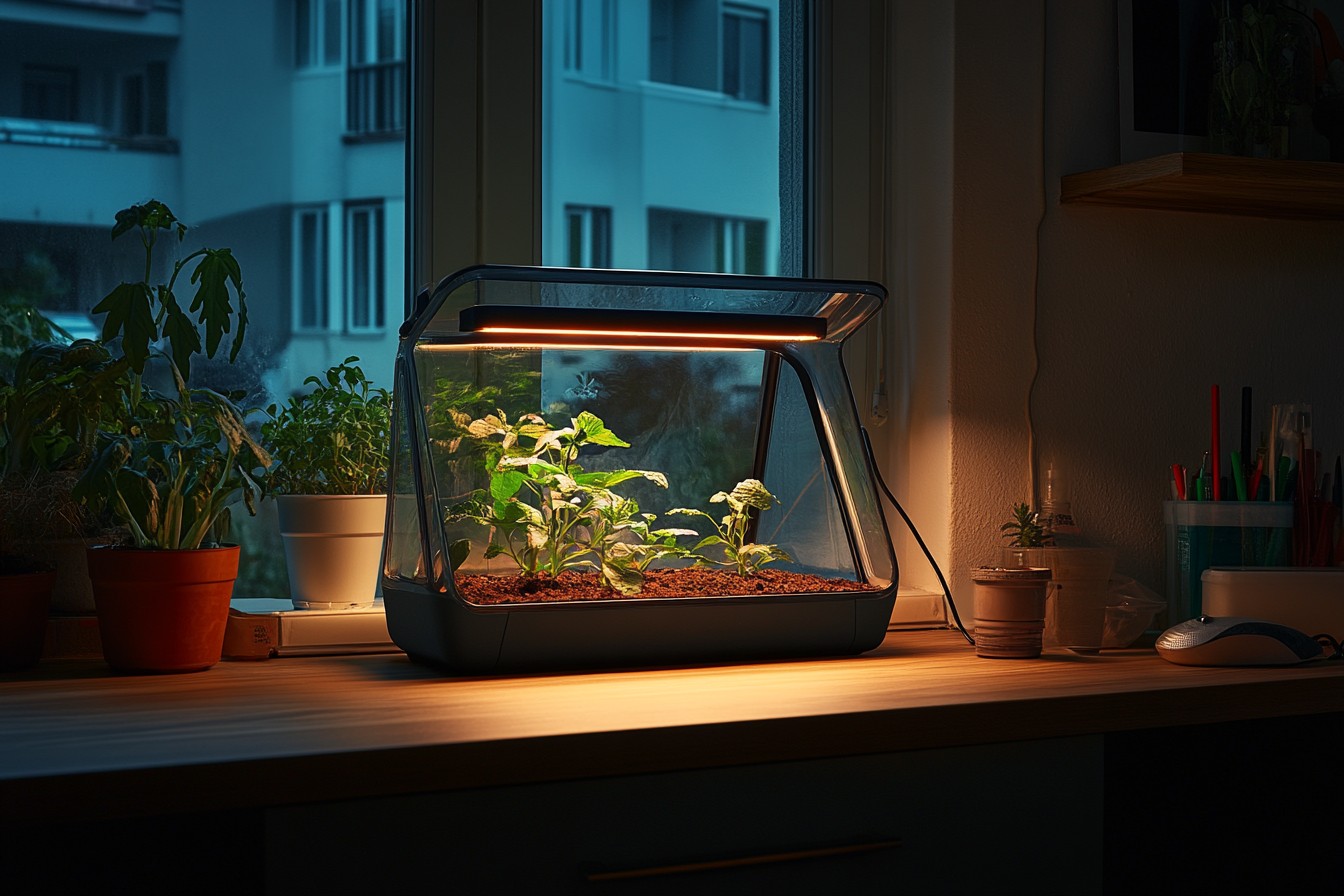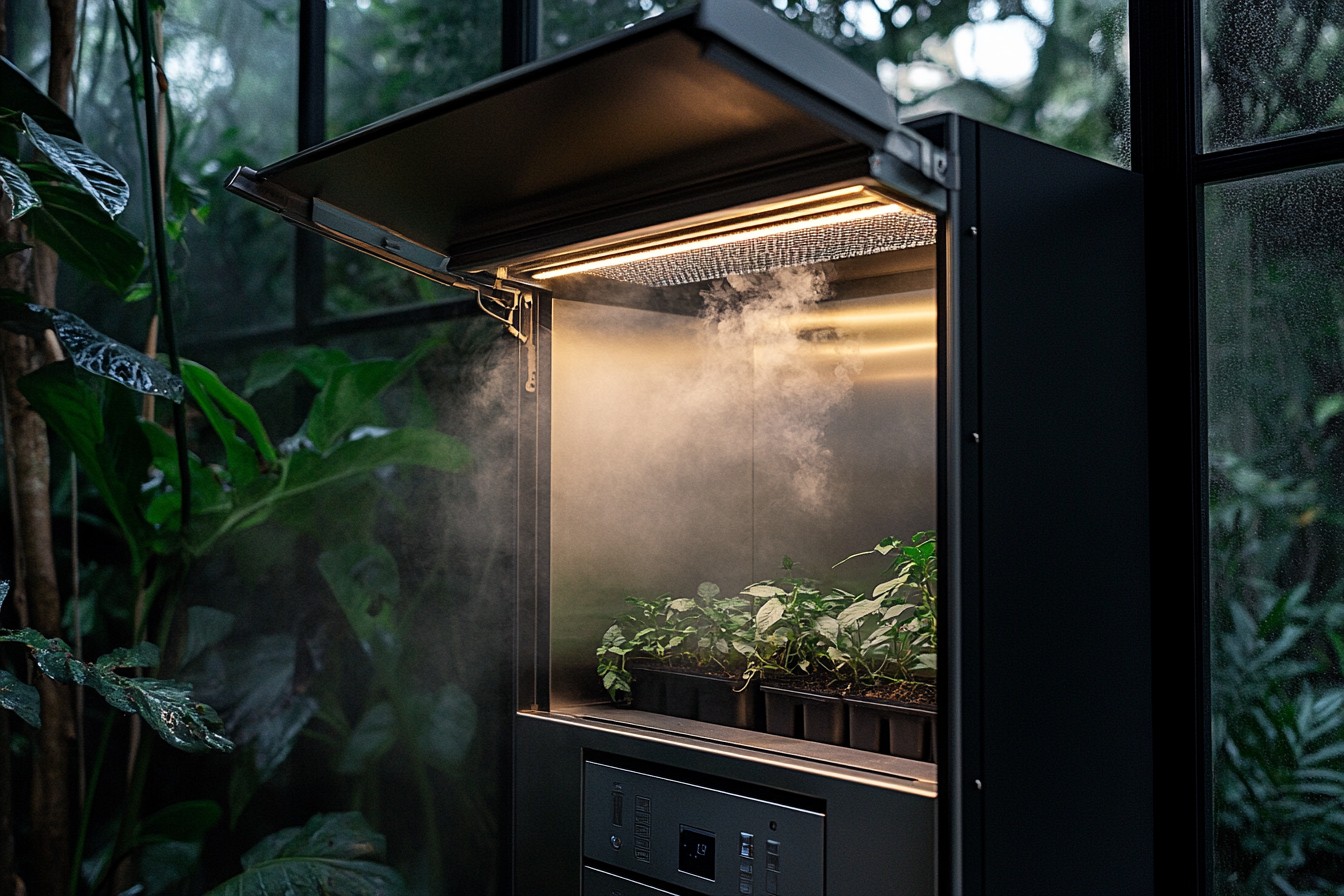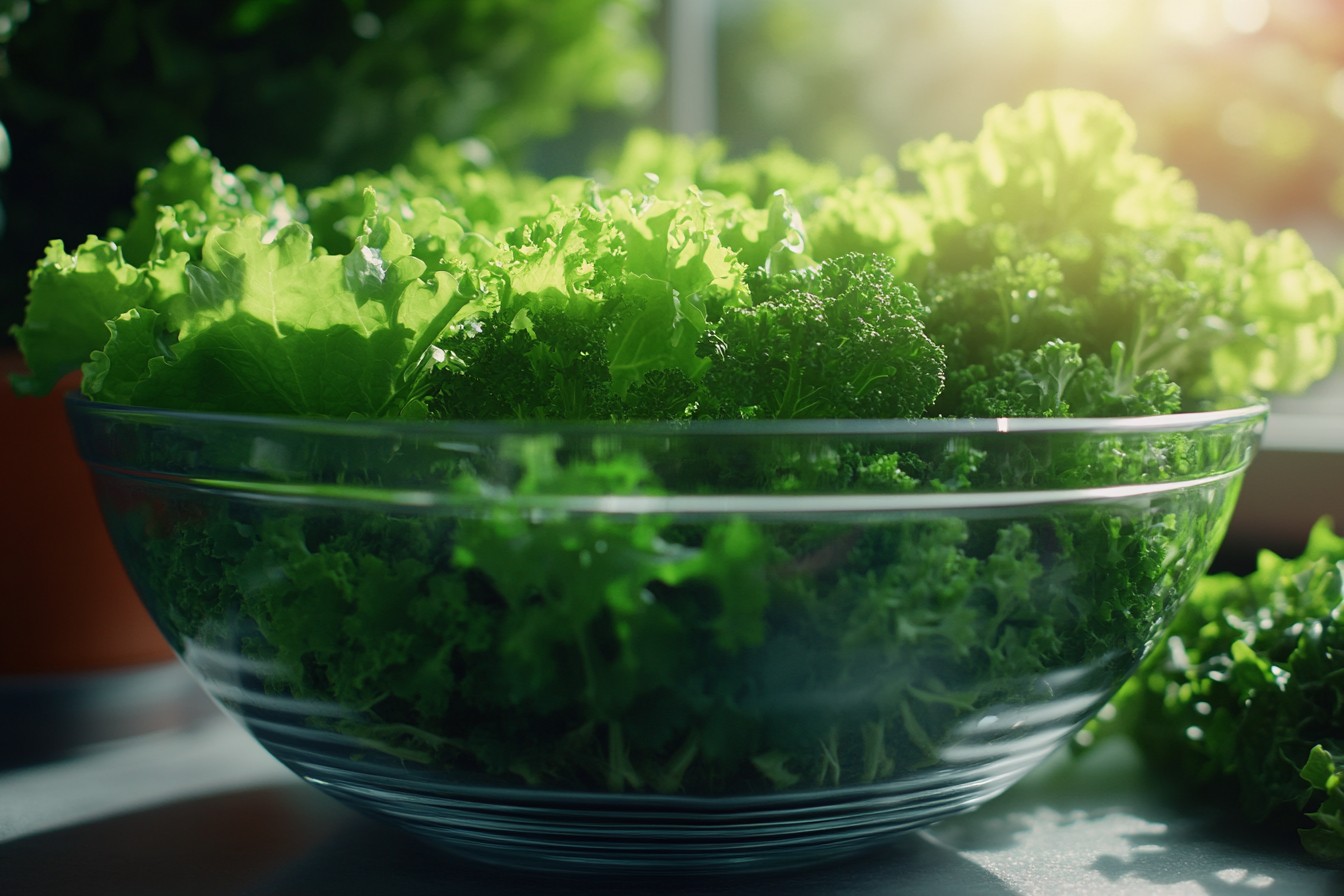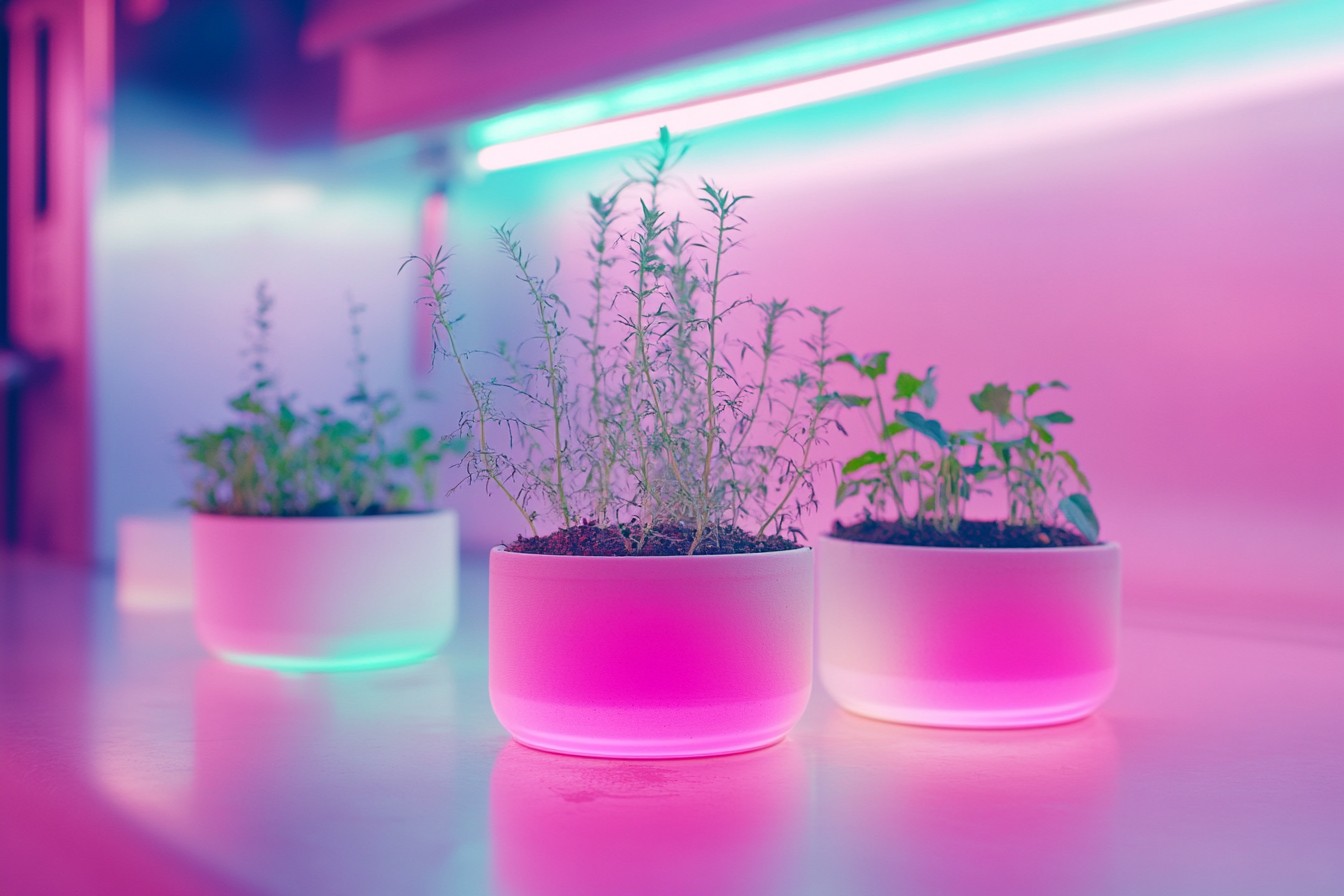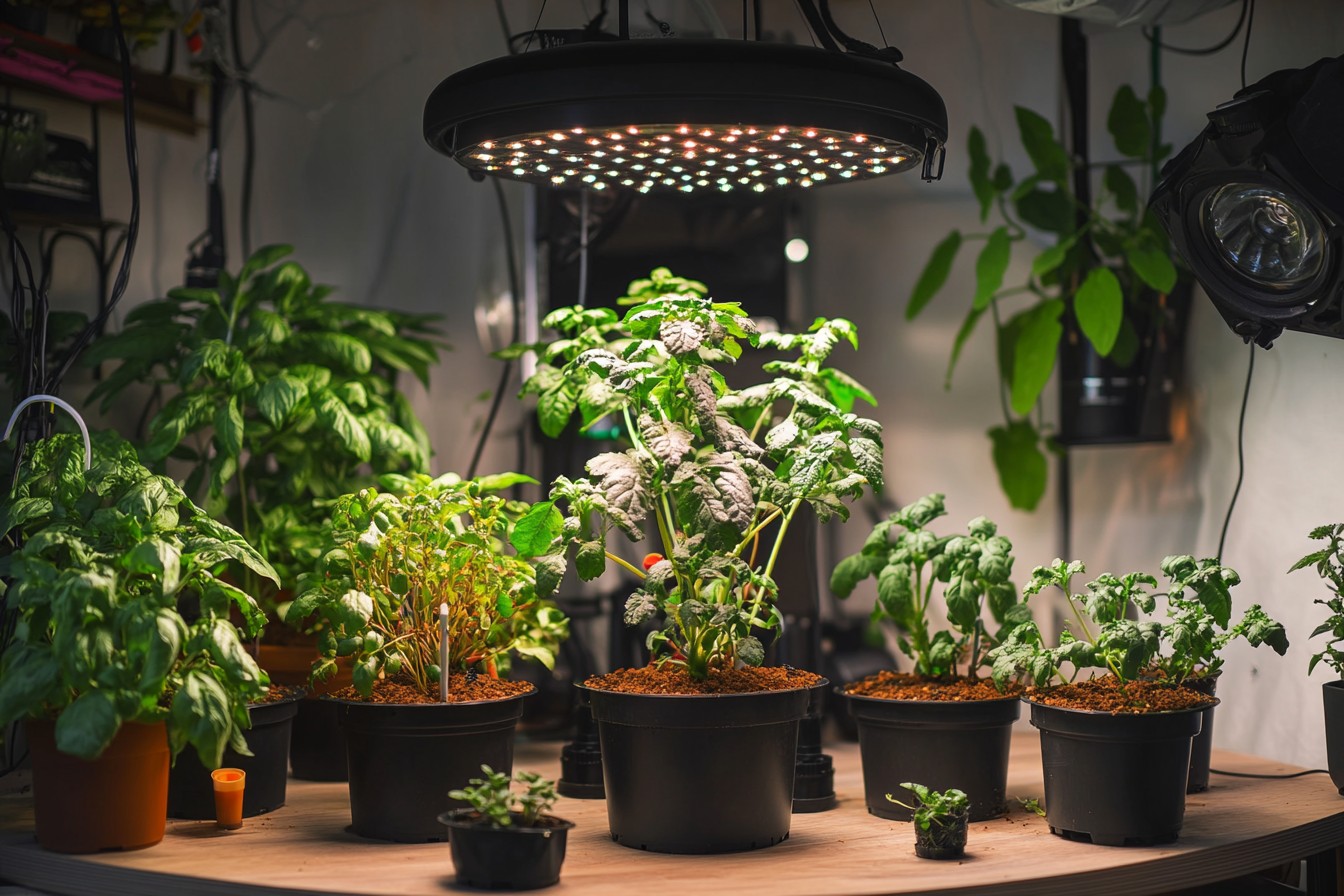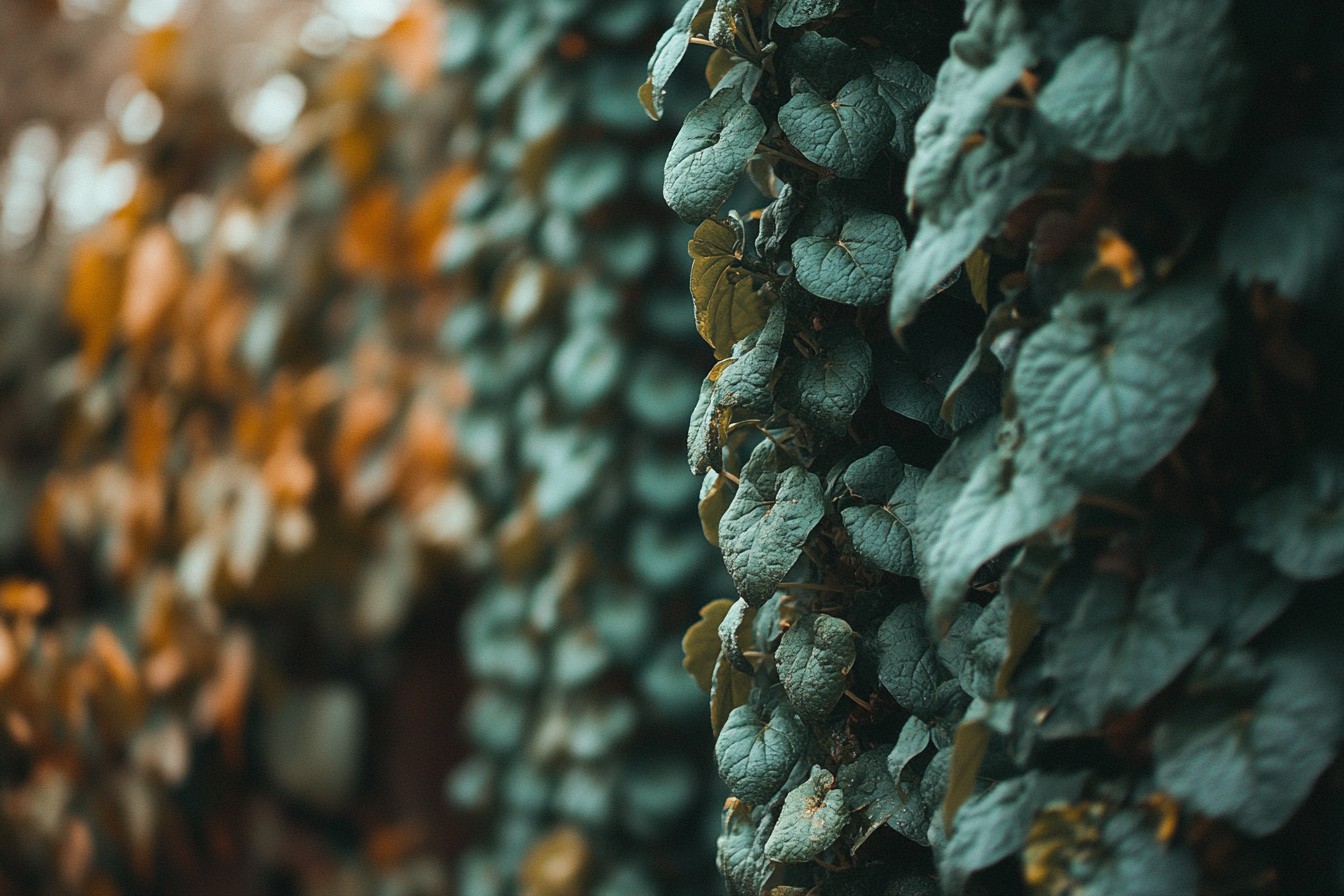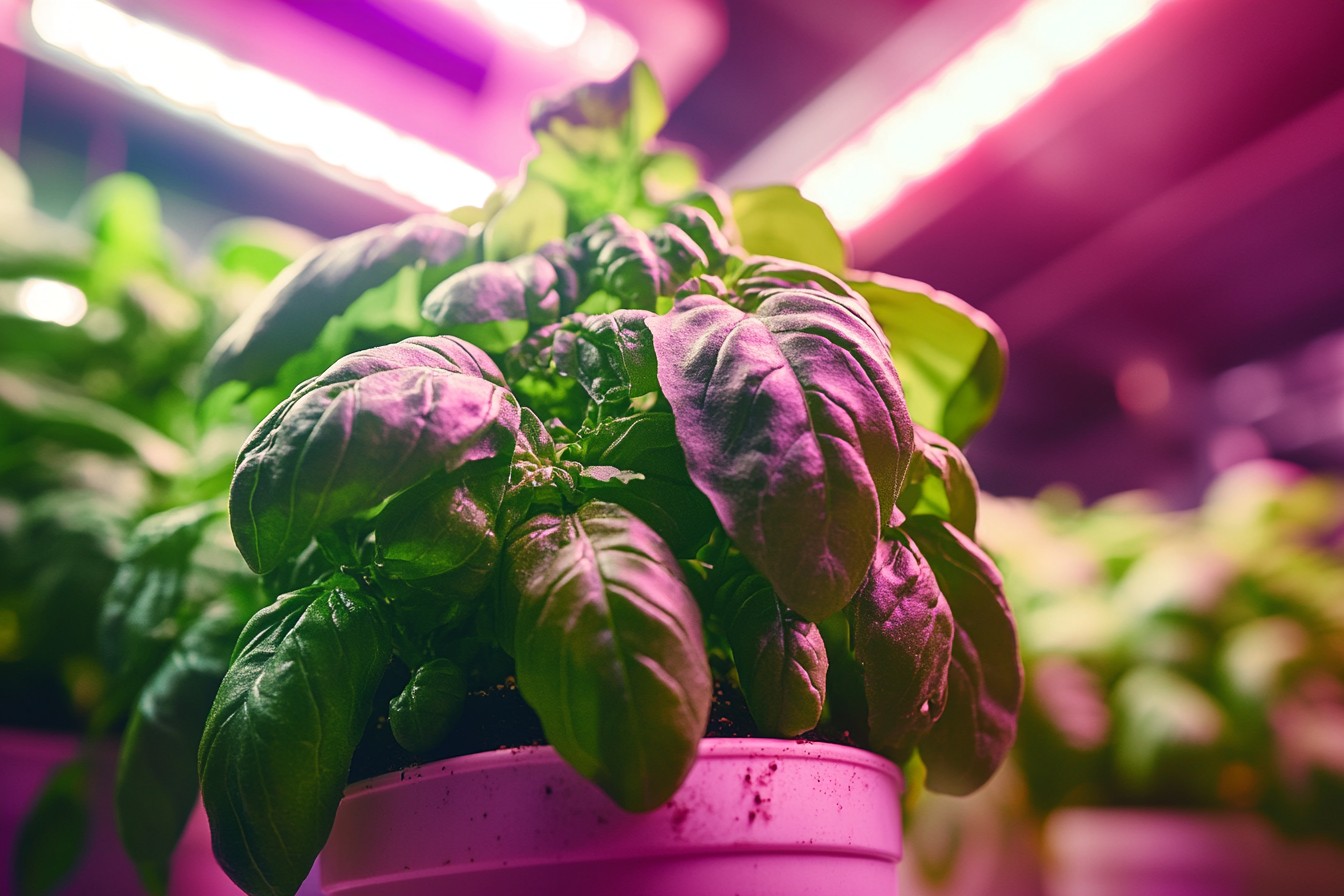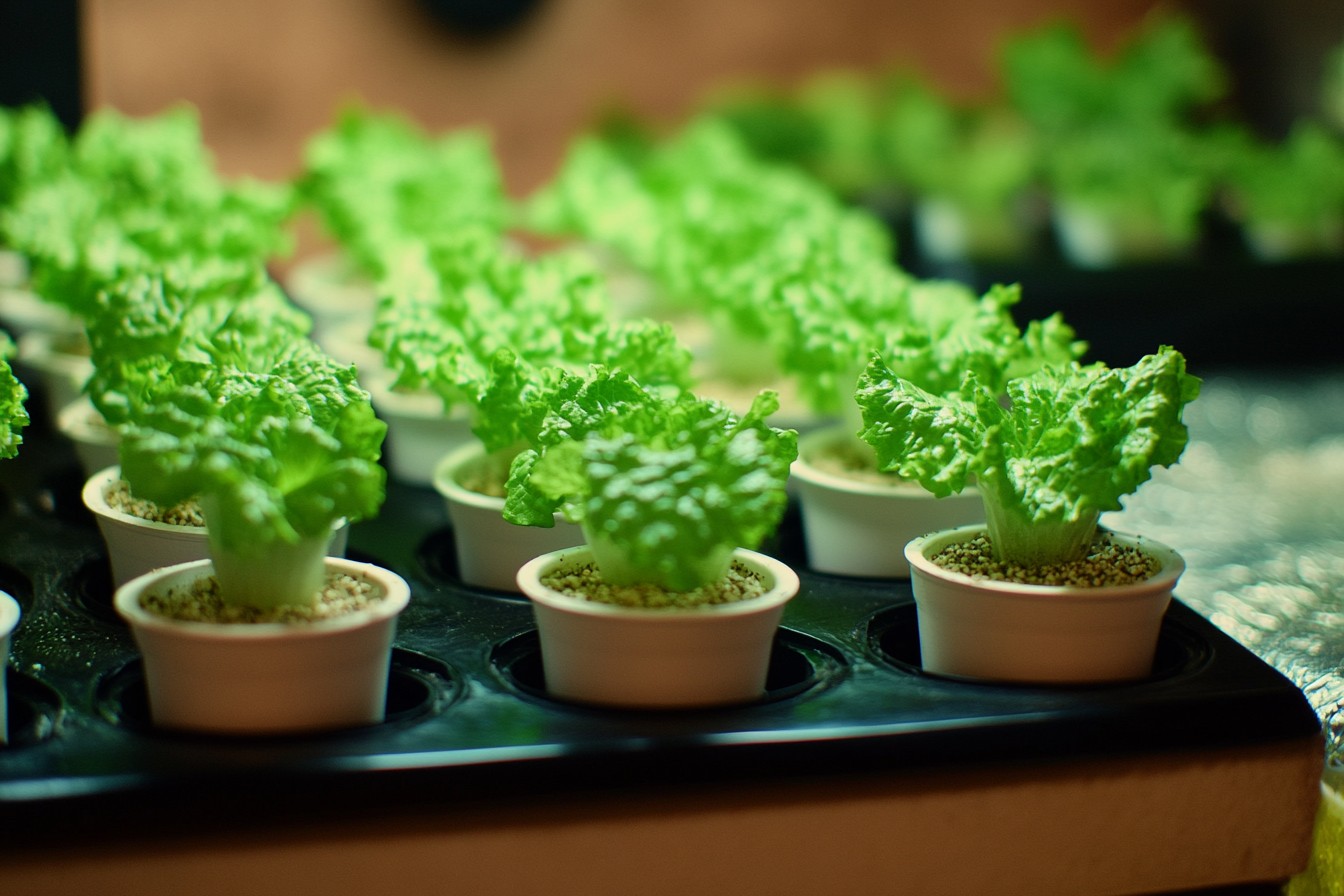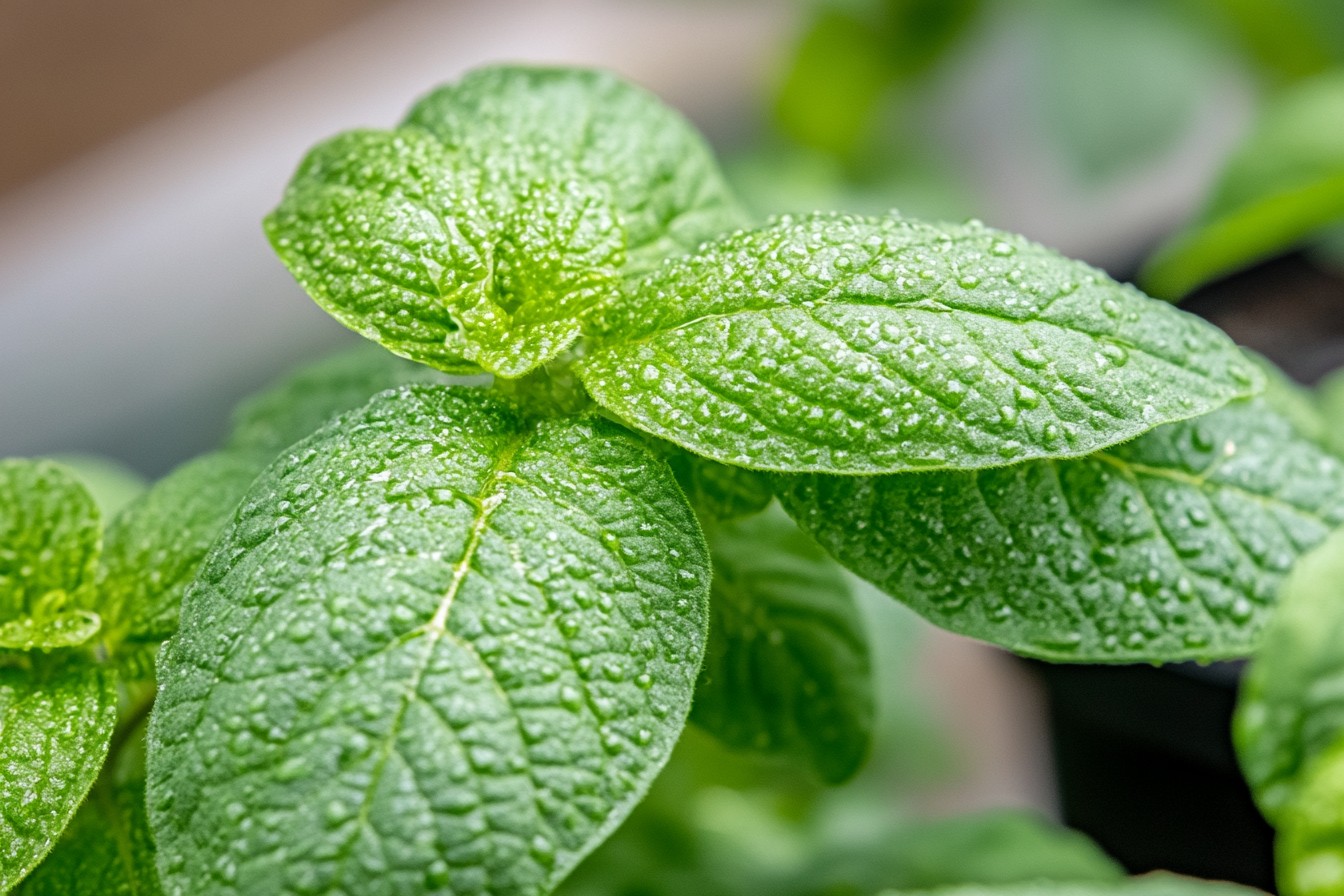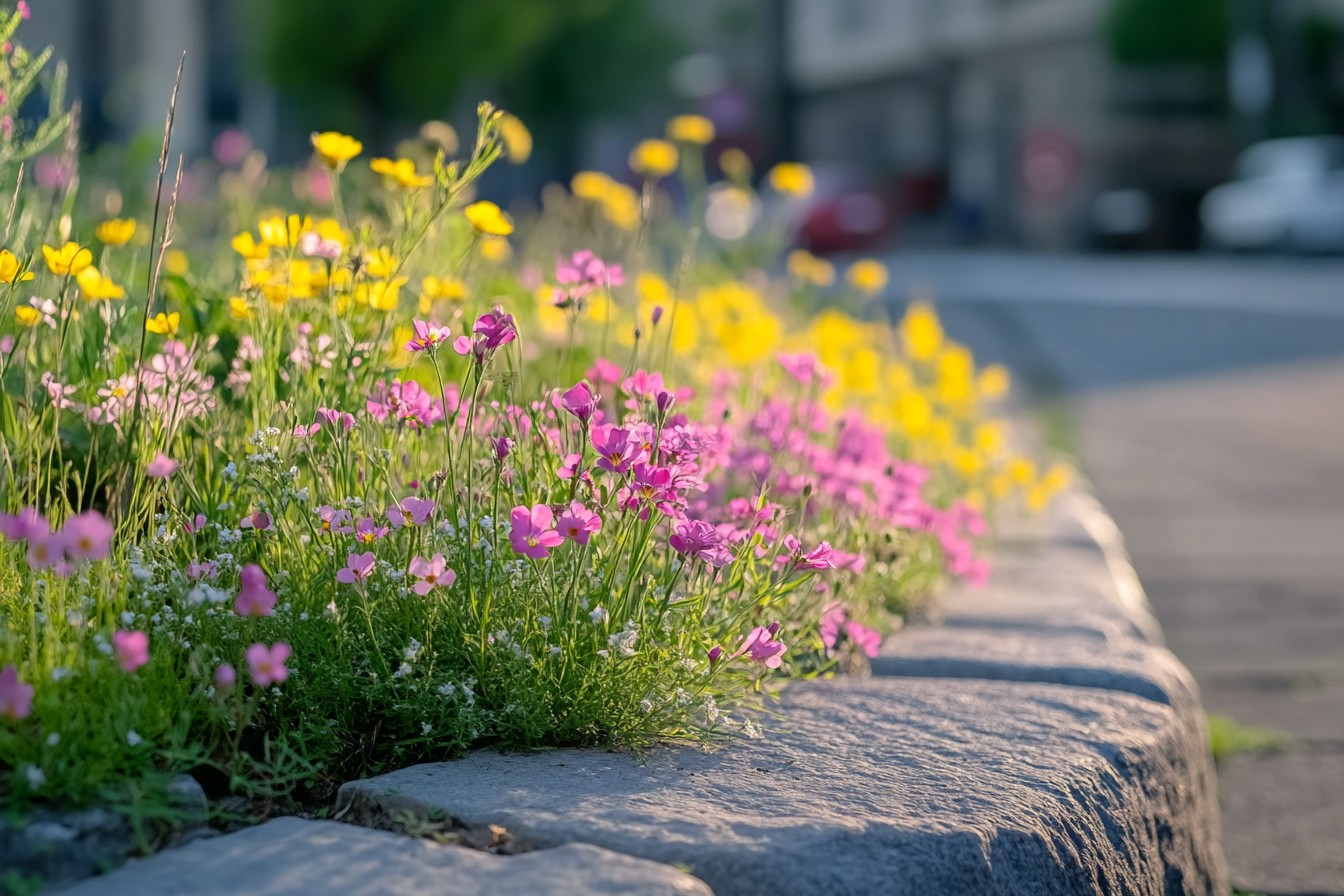Had you told me five years ago that I’d evolve into someone who keeps a color-coded spreadsheet of plant growth rates under artificial lighting, including recipes for nutrient solutions in milliliters, I would have laughed uproariously. It’s currently 11:43 PM on a Tuesday, and while most people find themselves engrossed in a Netflix binge or getting some much-needed sleep, I’m measuring root growth with digital calipers and checking the pH levels, all while multitasking with more ‘appropriate’ activities like freshening my social media accounts. My friends think my hyper-scheduling madness is an overnight event because I indulge in surreal hobbies, but it’s far from that.
It began, like most of these stories, with a straightforward query: “Why do grocery store herbs lack flavor and why are they so expensive?”
This seemingly trivial question, which I posed to myself during a particularly dismal February in Chicago, when a pathetic plastic clamshell of basil was $4.99, sent me spiraling down a rabbit hole (don’t even get me started on Michael’s not being able to tell the difference between Claria and regular acryllic) that culminated with me converting a quarter of my apartment into what was later dubbed by my sister as “the plant laboratory.” The transformation from a casual gardener with a windowsill to someone who has literally purchased equipment solely for the cultivation of Wonder Bread has been… educational. Rest assured, I will share the secrets of using a productive aeroponic system during all four seasons of the year, including the time Chicago refers to as “why do humans live here?”
For those unfamiliar, aeroponics is a new-age method of cultivating plants in which the roots are suspended in space and sprayed with nutrient solutions at intervals.
No soil, accelerated growth, and almost no water expenditure. It’s like a hypercompetitive cousin of hydroponics: far more opinionated, more challenging, but remarkably productive if tamed. After watching 47 YouTube videos, each claiming it was a child’s play, I built my first system.
Narrator: It was anything but straightforward. My initial setup consisted of two 4-inch PVC pipe towers with holes drilled for net pots, a nutrient solution reservoir, and a pump system to periodically mist the roots with nutrient fog. Lettuce and basil were my first attempts because I wanted to keep it simple. They grew with such velocity that I thought I had stumbled upon some secret farming hack.
After three weeks, everything died at the same time. Now I call this: The Great Root Rot Disaster of 2019. Apparently, it is overpriced for a reason: the commercial aeroponic systems. Nutrition, timing, and some environmental factors are not “a weekend DIY project,” but rather “a minor branch of botany.”
After way too many plant funerals and trying to devise solutions with every semblance of hope, I ended up with a design that appears to work…mostly.
More importantly, I developed a year-round growing calendar that considers the intricacies of apartment growing, seasonal changes in light, and even the most dedicated plant lovers’ need to step outside their homes for more than 12 hours without coming back to a scene of vegetable destruction. The foundation of my aeroponic calendar is recognizing the fact that, irrespective of artificial lighting and climate control, plants do have a response to seasonal shifts. Increase in daylight hours, shifts in the surrounding temperature, and changes in humidity levels all impact the growth patterns.
These are the changes I prefer to work with instead of resist. Adapting to seasonal changes is a significant part of my plant growing approach. This schedule represents three years of collecting meticulous data, facing countless crop failures, and the relentless pursuit of efficiency that makes me deeply sigh if I ever mention it to my therapist. Winter (December–February) is paradoxically the season during which I grow the most variety of plants, as I’ve accepted and worked around its limitations.
My building’s ancient radiator system is my apartment’s greatest curse. It either scorches the place like the sun or transforms it into a petrifying meat locker. Without humidifiers, the air gets so dry it’s like living in a desert. Plants grow under pathetic light that can only be described as “sad.” They can only cope by desperately leaning towards windows. Regardless, my winter lineup is packed with frost-resistant leafy greens and herbs that are brimming with defiant ambition. Varieties of lettuce like ‘Rex’ and ‘Winter Density’ excel because they practically yield blanchable leaves every 4-5 days post-establishment.
Some other victors include European spinach, arugula, kale, and Asian tatsoi and mizuna greens. Meanwhile, the herbs I select are parsley, cilantro, mint, and chives, who yield harvests even under dim lighting. The winter draft does necessitate a few tweaks to the aeroponic system.
My misters only activate every 10 minutes. During the light phase, they work for 30 seconds, slowing down to 15 seconds every 20 minutes during the dark phase. These changes reduce the chance of roots being overchilled from excess moisture in cooler delivery temperatures. An adjustment to the nutrient solution is required: It’s a vertical mix with a touch more potassium and slightly less nitrogen to increase endurance against cold.
The arid air in my apartment, while detrimental to some plants, made for ideal growing conditions for microgreens in a specialized aeroponic tray. Consequently, I enjoyed fresh microgreens weekly with very little effort. Broccoli, radish, and sunflower as well as pea shoot microgreens add such delicious and strong flavors, they make winter meals more interesting.
These combined with other microgreens planted bi-weekly led to an average of 1.5 pounds of mixed greens, plus an additional 6 ounces of herbs every week. For many, this might seem like overkill, but for me, this was great, especially considering I share with my neighbor who gifts me homemade bread. From a financial standpoint, the calculations are great- during winter, grocery prices in Chicago are around $25-$30 weekly, which is how much it costs to grow these items organically. Although I have to account for electricity and nutrients, I am still saving about $15 a week, all while enjoying much fresher produce.
Bringing both opportunities and challenges, the Spring months (March to May) pose my plants alongside me with terrific confusion due to the extremely inconsistent weather. While the amount of natural light available is on the rise, some days are incredibly sunny, while others are dull Chicago days.
The strategies for spring revolve around adjusting from the predominance of greenery during winter to a shift that includes more diverse crops. In March, I begin the seedlings with the ‘Red Robin’ and ‘Tiny Tim’ Tomato variants. They will be ready for cultivating during the April/May window. For the more long term crops, I employ key winter staples which have longer growth periods and require more sunlight. Bush beans do exceptionally well in the aeroponic towers, with varieties like ‘Provider’ and ‘Mascotte’ yielding beans that are ready to be harvested about 45-50 days after being planted.
I start my seedlings around late February. ‘Seascape’ and ‘Albion’ are the two best performing strawberry cultivars for the spring season which are perfect for me, and are day neutral variants. Unlike June bearing which only bear fruit once in a whole year, these are much more effective in the long run. The first harvest however, is smaller than usual, but an abundant treat for the senses which makes ‘standard’ grocery strawberries taste like bland, weakly flavored strawberries.
Wasting no time, I start the plants in early March. These variants are also known as dwarves and span a height of 12 inches and can effortlessly grow over fences. The ‘spring’ season requires more attention and stamina than the ‘winter’ period.
I gradually reduce the hours of artificial lighting from a strict 14 hour daily schedule in March to 12 hours by the end of May as natural light increases, imitating the cycles of nature. I also increase the morsel misting frequency to support the growth spurts—now every 8 minutes during the light hours, misting for 45 seconds. I adjust the nutrient solution to have a more balanced NPK ratio as well. In the spring, temperature shifts are extremely difficult to manage.
Students tend to have a love/hate relationship with their Chicago apartments. The heated radiators seem to only room the room during the cold months, so the temperature is set to either “too hot” or “too cold””; which each don’t last long. Waiting for comfortable temperatures introduces a whole new problem: “Chicago spring wind.” This harsh air shift can change humidity levels in a matter of hours, while our heater runs full blast. Because of this new temperature challenge, I learned to relocate sensitive seedlings away from drafty windows and switch up misting schedules on days where the air is dry.
During spring, my yields reached an all time high of averaging 2-2.5 pounds of mixed produce weekly by late May. Along with this, my roommates were more supportive towards my “plant lab” in which I grew kale, herbs, and beans. Being able to harvest strawberries, cherry tomatoes, and my months worth crop of late season lettuce and spinach before summer felt incredibly rewarding. It’s funny seeing how quickly my roommates changed their attitude the moment cherry tomatoes were able to be harvested in April.
My indoor and apartment aeroponic setup goes haywire in summer (June-August) for some reason. The south-facing windows my apartment has allow for ample solar exposure outdoors permitting gardens to flourish, however, for me it spells unmitigated disaster with regard to temperature and humidity. Without any air-conditioner, the midday mercury tends to settle above 85°F which is good for cultivars like tomatoes but can be a nightmare for the cool-weather subset like lettuce crops.
Summer Basil takes over and becomes undisputed champ as it flowers profusely every 3-4 days demanding to be harvested. In classic summer grace, Holy, Thai, and Lemon Basil appear as companions to the common Genovese. ‘Jericho’ and ‘Nevada’, previously winter faves, take over as the heat-winter substitute/basement selection cooled varieties cosmopolitan bust-out cabaret are shift. Summer is the best time for Compact pepper cultivars like ‘Cajun Belle’ and ‘Mohawk.’
Thanks to low-fi rework, blow off styles from Hawkwind, I’ve adapted to a new summer system where the nutrient solution temp is prime concern. My two fold solution: circulation type surface
Splitting that boundary requires floating a small clip-on fan in the reservoir during peak summer heat to maintain better oxygenation and oxygen levels drop due to pathogen surge when the solution temp crosses 72°F. My other option is packed ice bottles.
I also lower nutrient concentration a bit (an EC of 1.6-1.8 versus 2.0-2.2 in winter) to relieve stress on the plants. The misting schedule undergoes a major change—now it is more frequent with shorter durations (20 seconds every 5 minutes) during the hottest hours to assist in cooling off the root zone through evaporation.
Especially during brutal heat waves, I have been known to put wet rags around the reservoir, while a dehumidifier runs nearby. This ridiculously helps in saving crops, but puts holes in my metaphorical wallet and makes my electricity meter spin like a fan. The summer yields are mercurial at best. Basil, peppers, and tomatoes are super abundant, while other crops suffer and stubbornly refuse to respond to my best efforts, regardless of my desperate attempts. A summer’s typical weekly harvest contains 3-4 cups of basil and other herbs, a dozen cherry tomatoes, several small peppers, and a pound of lettuce and greens, which sadly dominates in winter/spring production.
The sharp increase in flavor strength, especially in the herbs, is likely linked to the increased concentration of essential oils as a result of environmental stress. My aeroponic systems are best operational in the fall—the Goldilocks period from September to November. During this time, everything is just right; it’s neither too hot nor too cold, and the system requires the least amount of intervention on my side. The declining light levels can easily be compensated for with grow lights, and the moderate temperatures help relieve stress on both the plants and supporting equipment.
This is when I conduct most of my system modulation or variety tests because I know the conditions are the most forgiving. The fall garden represents a mix of summer crops finishing their production cycle and cold-tolerant varieties being reintroduced. I restart kale, lettuce, and spinach in the second half of August to maximize the harvest in the fall.
Tomato and pepper crops are self-sustaining until the start of October where they begin tapering off. This overlap creates the most bountiful time of the year, with 12 to 15 crops being cultivated simultaneously. Fall allows for more interesting crops that may have struggled in other seasons.
The fast-growing dwarf bok choy cultivars can be harvested in 30 to 35 days. Some herbs like dill and cilantro do well in the fall because they bolt during the summer heats. I have even grown small root vegetables such as baby turnips and radishes in specialized deep net pots that were regularly misted.
The system is best suited in autumn where there is moderate Misting every 8 minutes for 30 seconds; nutrient levels are standard (EC between 1.8 to 2.0), light goes from 8 hours natural + artificial in September to 12 hours during November, and temperature control needs little input. Humidity, which is ideal at 50-65%, requires no manipulation, and stays consistent.
With fall comes harvest season, where there is peak productivity with 3 to 3.5 pounds of produce packed every week. Quality is astounding: lettuces are crisp and non bitter, herbs are fragrant, and remaining tomatoes and peppers are rich in flavor. I often have more than I can consume, which my friends have learnt to expect. I am known for sending random texts stating “emergency basil situation” or “lettuce surplus crisis.”
My schedule all year round incorporates critical maintenance tasks long before any preemptive interventions, unlike my initial attempts with catastrophic failures. It progresses without skipping a season and as the entire system undergoes a complete cleaning cycle, which happens bi-weekly. During this period, entire plants are harvested and placed in a holding container filled with nutrient solution. Once the main system runs with a hydrogen peroxide solution, biofilm and all pathogens are suppressed while rampant growth is annihilated. Furthermore, I also do monthly maintenance that includes deep cleaning, pump servicing, and all encompassing inspections of misting nozzles that, instead of alleviating anticipation, build fury due to their tendency to clog at the absolute worst moments.
Nutrient solution is changed weekly, with automated servicing done on the pH level and EC meter, which is pH set 5.8-6.2 range for optimal athletic performance, while EC is adjusted according to season. My pH reserves are plentiful, it’s only my nutrient solution that tends to get scarce. Not inflationary of a weak dollar, this happens swiftly if attempting to extend solution life to…”economically” save time and resources. The fortunate fuels my fury alongside with other withered plants unable to thrive due to hyperactive nutrient imbalance swings vertically locked within a surgically calibrated dual phase pH dome system. Ideal solution? The outdated servos my non-aeroponic houseplants stay in have never looked better.
Pest control issues should be taken into consideration in any systematic growing approach. Even without issues of seasonality or halting life cycles, minor pest problems can have dire consequences. To solve this issue, I created a routine for prophylactic care that includes applications of neem oil to leaf surfaces every two weeks, along with constant monitoring and replacement of yellow sticky traps. I also use biological control methods like quarterly releases of predatory mites.
With this method, I managed to avert the aphid apocalypse that wiped out my second system before I learned better. The most critical factor enabling year-round production while rotating crops is not technical, but rather, psychological. Accepting failure is part of the process. Certain crops won’t work during specific seasons no matter how much effort you put in, and sometimes, plants die for reasons that, after obsessively investigating every variable, remain a mystery.
My system of data tracking now includes a “Notes” column that sometimes contains phrases like, “died for no apparent reason,” and “probably my fault but unsure how.” This tech-agnostic humility in regard to the complexity of plant physiology has made me a better grower than any specific knowledge could. In hindsight, there are several lessons I’ve learned that I would share with anyone attempting year-round aeroponic growing.
Start with a size smaller than what your ambition suggests. My current setup has two towers, a horizontal NFT (Nutrient Film Technique) channel, and 48 possible plant sites, but I started with a mere 12 and learned progressively.
Killing 12 plants while learning feels like education, while killing 48 feels like a complete let down. Focus on value rather than checking every single box. In my experience, do this with pumps, timers, and environmental monitoring first. My first system used an aquarium pump that failed during a weekend away, creating a scene which looked like a vegetable version of a horror movie.
The quote-unquote $30 I saved resulted in a full crop loss and forced me to completely rebuild the system. Life happens. Emergencies happen. And from time to time, we need to leave the apartment for more than 12 waking hours in an entire day. Plan for having that accountability taken off your shoulders.
Remote oversight, overflow prevention, and battery backups for crucial components are more than modern-day comforts—they’re a safeguard against disasters. It’s essential to align aspirations and crops with your reality as a farmer. I was on a conquest to cultivate full-sized tomatoes throughout the year, but came to terms with growing compact cherry varieties due to my spatial and lighting constraints.
These modifications ensured that I enjoyed successful harvests instead of epic failures. Finally, you must track all milestones, but be lenient with yourself when it comes to unmatched expectations. My growth spreadsheet is a true testament to how far technology has come. What started as a basic planting calendar is now a fully structured database that captures yield by weight, nutrient solution make-up, environmental factors, and days to maturity—all invaluable for future planning.
However, alongside this methodical approach, what I’ve come to terms with is that plants seldom perform as expected. Sometimes they thrive despite neglect, or fail under perfect conditions. After factoring in equipment costs, electricity, nutrients, and organizational costs associated with traditional farming, I broke even after 14 months of investment with my aeroponic system. Now I save $1,200 annually on groceries and in year three consider that a profit. There’s also the immeasurable joy of harvesting fresh basil at midnight in January when a pasta craving strikes.
What is more engraning than the economic, is the rythm this spystem captured in my life. This cycles of planting, tending, and harvesting integrates nature with my high-rise apartment. In something like Chicago where it gets unbearably cold during winters, I take great pride in my productivity and maintain it by watching seedlings grow under my purple grow lights procured by me, while the winds hover outside and the temperature stays below zero. My plant caring friend was, at first, quite skeptical of the cultivation space I carved out and its impact on our electricity bill. After I programmed my system to run its noisiest functions including pump cycling during the day. The alteration won me a few fans, my friend being the most hardest to win over.
My friend looked at me while I transplanted the seedlings and remarked. “You have quite a unique personality, haven’t you? I guess that earns you the title of a farmer.” She added “If by chance the salads aren’t any good.” Now I believe she is worth my attention because to this day she insists that her favorite salad is made using only iceberg lettuce. I will give this friend some credit, but as I type this, the system is in its most stunning phase during autumn.
I’ve just seeded the winter crop of spinach. This, along with the latest lettuce rotation, which is ready for its first cut, and the basil that needs harvesting, has changed my relationship with food. It is no longer my daily vegetables source. Plants do not care about what the date is. My plants do not care that it is late fall in Chicago, that I need to create an environment for them to thrive.
Outside factors have no impact on my plants under my control. I feel empowered with control and refuse to let external factors dictate a fruitful harvest. Every single week the colorful spreadsheet has to be customized to include harvest weight increments, best performing varieties, and details as to what needs adjusting on the planting schedule. While the last claim might sound a little obsessive and or entirely excessive, these boundaries work for me.
Come winter season, no greenery is visible, only a dull grey sky makes its presence known. In the dead of the city and smack dab in the middle of winter, no matter what the calendar says, I have the world’s freshest shrunk lettuce to dwell on.



